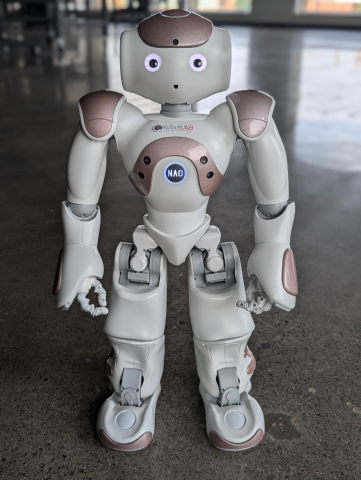CLEVELAND--Robots have long captured our collective imaginations. In today’s world robotics are an essential driver behind next-generation products, medical innovations, educational advances and more. Case Western Reserve University innovations are leading the way.
Researchers across Case Western Reserve University—including at the cutting-edge —develop projects with the potential to reshape how we conduct our lives.
Robots for mental health and human interaction
In the at Case School of Engineering, Assistant Professor ’s research team designs, builds, and programs robots for unique social and physical interactions with humans.
One such example involves the NAO robot, part of the team’s ongoing AstroPsycho project: a multimodal framework designed to provide dynamic mental health support in challenging environments where traditional support is limited or impossible.
By leveraging asynchronous therapist guidance and real-time physiological signals to administer on-demand support sessions, AstroPsych adapts continuously to the evolving needs of individuals in crisis.
The SaPHaRI team is also at work on RoboSOAR (Robotic System for Optimized Adaptive inteRaction), a Baxter Robot (Rethink Robotics, 2011) a robot they inherited that is mounted on a custom mobile base. Knowing how influential first impressions can be, the team is exploring how a robot that adapts its gestures and behaviors based on human feedback can shape people’s willingness to engage with it.
including their ongoing Turtlebots project, an exploration of the interaction between humans and a group of mobile robots in a guided navigation context.
Biologically inspired robots bury cables and retrieve underwater mines
In Assistant Professor ’s lab at Case School of Engineering, the team is working to create “soft robots”: creations that bridge a gap between the design and function of biological creatures and manufactured robots. Their goal? Enable humans to accomplish important tasks—wherever they may be.
In one such example, the Daltorio Lab is working to extend human reach underground. , they’re drawing inspiration from worms to develop a peristaltic conduit that expands and contracts to burrow into the ground. The project—which also —could pave the way for underground powerline installation nationwide, regardless of surrounding infrastructure limitations.
But worms aren’t the only creatures offering Daltorio inspiration. As co-director of the Biologically Inspired Robots Lab, Daltorio models crabs, applying their abilities to crawl, clutch, and climb to the robots her team creates. Possible applications include retrieving unexploded bombs from underwater, testing the integrity of offshore oil structures and the like—but they’re just getting started.
From idea to marketplace
Supported by CWRU’s (TTO) and the Veale Institute for Entrepreneurship, Daltorio’s efforts recently led to the launch of CrabLine Robotics LLC, a startup . made by the Veale Institute to see her lab’s crablike robots in action.
With help from the TTO, CWRU other researchers have recently launched spinoffs including designed to better protect road workers, and, an MRI-guided, magnetically actuated robotic arm technology. Others have partnered outside the university with existing robotics companies, integrating ongoing campus research into new product development such as a robotic approach for and the use of with Alzheimer’s or early-stage dementia.
###
_RGB Blue20230706101098.jpg&width=320&height=100)

